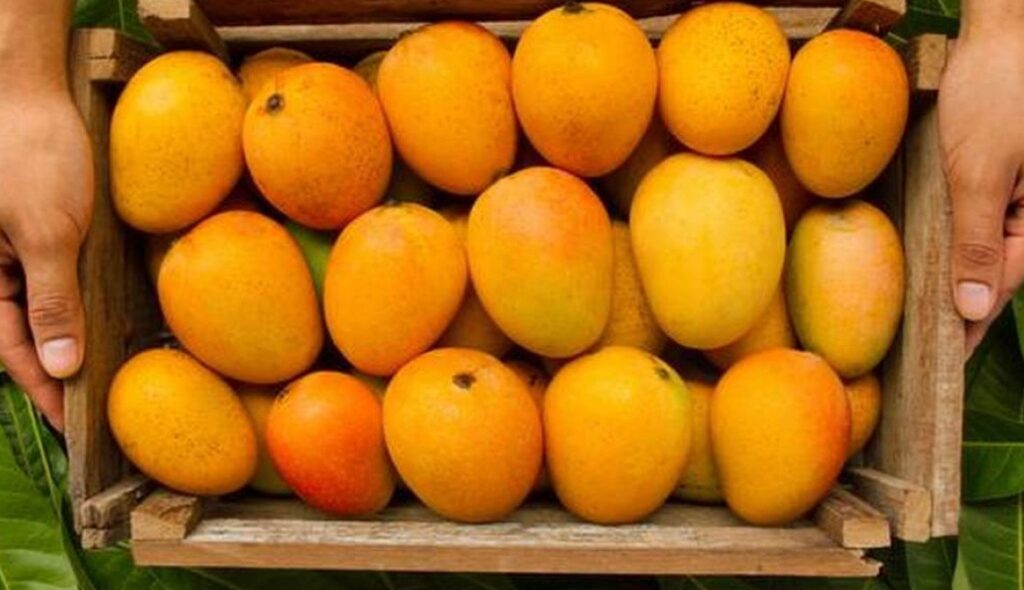Alphonso Mango

Alphonso Mango
- Botanically, mango is a drupe, consisting of an outer skin, a fleshy edible portion, and a central stone enclosing a single seed – also called stone fruit, like a plum, cherry or peach.
- Where do mangos come from? Mangos were first grown in India over 5,000 years ago.
- Mango seeds traveled with humans from Asia to the Middle East, East Africa and South America beginning around 300 or 400 A.D.
- The paisley pattern, developed in India, is based on the shape of a mango.
- A basket of mangos is considered a gesture of friendship in India.
With a strong supply chain and strict quality control, our mango export from India to Dubai guarantees rich flavor and farm-fresh quality.
The Alphonso mango, known as “Hapus” or the “King of Mangoes,” is a premium, seasonal fruit (mid-April to end of June) with a rich, creamy, and tender texture, and delicate, non-fibrous, juicy pulp, with a golden-yellow skin and a slight reddish hue.
They require at least eight hours of full sun daily, so ensure they get enough light to support flower and fruit production. Alphonso Mango Trees can tolerate various soil types, but a sandy loam that is light and well-draining is ideal. The soil pH should range from slightly acidic to slightly alkaline (5.5 to 7.5).


